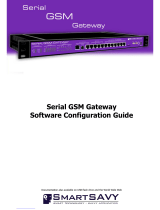White Paper T630/T628
13 October 2003
MMS objects
Although MMS is a direct descendant of SMS, the
difference in content is dramatic. The size of an
average SMS message is about 140 bytes, while
the maximum size of an MMS message is limited
only by the memory. That is why the key word to
describe Picture Message content is rich. Com-
plete with words, sounds and images, MMS con-
tent is endowed with the user’s ideas, feelings and
personality. An MMS message can contain one or
more of the following:
Text
As with SMS and EMS, an MMS message can con-
sist of normal text. The text can consist of up to
1000 characters. The main difference between an
EMS and MMS message is that in an MMS mes-
sage, text can be accompanied not only by simple
pixel images or melodies but by photographic
images, graphics, audio clips and in the future,
video sequences.
Templates
The T630/T628 comes with a number of MMS pre-
defined templates, for example templates for birth-
day cards, meeting requests etc.
Audio
MMS provides the ability to send and receive full
sound (iMelody and AMR) messages. Not only can
users share a favourite song or ring signal with a
friend, they can also use the mobile phone to
record sound and send it along with a message.
Because sound includes speech as well as music,
this extra dimension of an MMS message makes
for enhanced immediacy of expression and com-
munication. Rather than sending a downloaded
birthday jingle in EMS, for example, a user can
send a clip of his or her own personal rendition of
“Happy Birthday”.
Pictures and themes
By using the built-in digital camera in the T630/
T628 users can take a snapshot and immediately
send it to a recipient. The ability to send pictures is
one of the most exciting attributes of MMS, as it
allows users to share meaningful moments with My
friends, family and colleagues.
Mobile picture transmission also offers inestimable
utility in business applications, from sending on-
site pictures of a construction project to capturing
and storing an interesting design concept for later
review. Editing a picture by adding text allows
users to create their own electronic postcards, an
application that is expected to substantially cut into
the traditional postcard-sending market.
Themes (downloaded or pre-defined) can be
exchanged via MMS.
SMIL presentations
SMIL stands for Synchronized Multimedia Integra-
tion Language and is pronounced “smile”. SMIL in
the T630/T628 allows the user to the create and
transmit PowerPoint-style presentations on the
mobile device. SMIL is an advanced XML-based
protocol, and Sony Ericsson MMS supports a sub-
set of this protocol. Using a simple media editor,
users can incorporate audio and animated GIFs
along with still images, animations and text to
assemble full multimedia presentations.
The idea of SMIL is to allow the user to customize
the page timing in PowerPoint-style presentations.
The user can decide in which order the image and
text will be displayed, as well as for how long the
images and text lines are to be shown in the dis-
play
PIM communication with MMS
With MMS in the T630/T628, it is easy to send and
receive business cards, calendar entries and notes.
Business card (vCard)
With MMS in the T630/T628, the user can send a
business card.
Calendar entry (vCal)
With the vCal function the user can enclose a vCal
entry when sending a meeting request via MMS.
Notes
The T630/T628 supports vNote. Notes can be sent
via MMS.

























